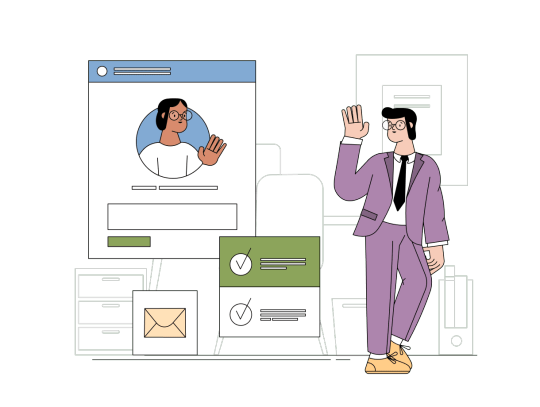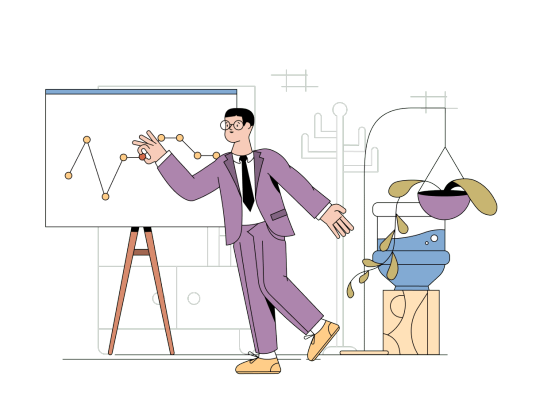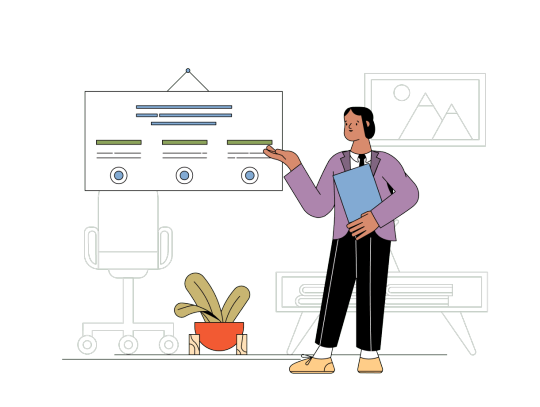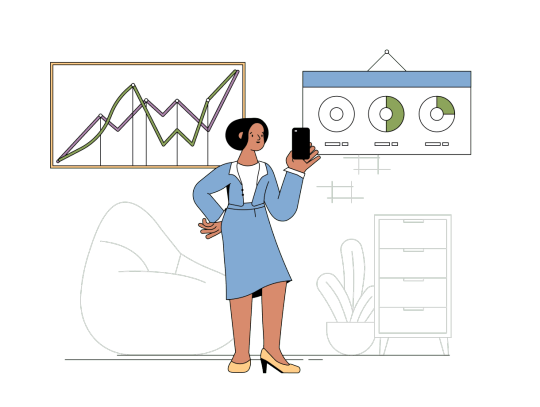Text
Employee Work Schedules
How often should employees get paid? Should they get paid every week or once a month? Is it better to pay weekly or biweekly? The answer to these questions depends on the type of employee you have. If you are a salaried worker, then you should receive your salary at least twice a year. On the other hand, hourly workers usually get their wages only once a month. Learn more: https://blog.hirenest.com/employee-work-schedules-youll-encounter-as-an-hr-manager-this-2022/
There are pros and cons to each schedule. For example, paying salaries weekly allows managers to plan ahead and budget accordingly. On the other hand, biweekly payments allow employees to save some cash during the slow months.

In addition to the financial advantages, there are many other reasons why employers prefer to pay monthly rather than weekly. First, it saves money by reducing payroll processing costs. Second, it makes it easier for employees to manage their finances since they don't have to worry about missing out on any paychecks. Third, it helps reduce the risk of fraud because it's harder to commit identity theft if you're not receiving checks from your employer. Fourth, it gives employees more flexibility in managing their personal lives. They can spend less time worrying about whether they'll miss work due to illness or family emergencies. And finally, it encourages people to stay longer at their jobs since they won't feel like they're being penalized for taking time off. You can find out more in our article: https://blog.hirenest.com/employee-work-schedules-youll-encounter-as-an-hr-manager-this-2022/
It's important to note that this is just one way to calculate the number of hours worked per day. Other methods include dividing the total number of hours worked into two equal parts (e.g., 8 hours divided into two 4-hour shifts), or calculating the average number of hours worked per week.
What Is an Employee Work Schedule?
The employee work schedule is the number of hours worked per week by employees. It includes both paid and unpaid overtime. In general, employers must pay overtime if an employee works more than 40 hours per week. Employees who work less than 40 hours per week do not qualify for overtime pay. An employer pays overtime wages at one and half times the regular hourly rate for every hour worked beyond 40 hours in a given week. For example, if an employee earns $20 per hour, then he or she will earn $40 per hour for each hour worked above 40 hours during a particular week.
Why is a work schedule important?
A regular routine helps us feel better physically and mentally. It gives our bodies something predictable to anticipate and prepare for. It allows us to plan ahead and set aside time for things we want to do. And it makes life easier by giving us structure and predictability. If you don't like your job, then change jobs! There's always another opportunity out there somewhere. Don't let yourself become stuck at one place because you're not happy with what you're doing.
The best way to find a new job is to start looking now. Start networking with people who know people. Get referrals from friends and family members. Look online for openings in your field. Talk to recruiters if they come calling.
Types Of Work Schedules
What kind of schedule would you prefer? Are you someone who likes to plan ahead or does spontaneity rule your life?
There are two types of schedules: fixed and variable. Fixed means you have a specific time slot every day where you perform certain activities. Variable means you don't have a specific time slot each day. Instead, you decide when you want to get things done.
Fixed schedules are great because they give you structure and predictability. They also allow you to focus on tasks that require high concentration. On the other hand, variable schedules are flexible and allow you to take advantage of opportunities that arise throughout the day.
The most common type of work schedule is called a "9–5" job. This means you start at 9 AM and finish at 5 PM. If you're lucky enough to have a flexible schedule, you might be able to choose different hours. For example, if you like working out after lunch, you could set aside one hour from 12–1 PM. Or maybe you'd rather do some writing during your commute home. Whatever works best for you!
Conclusion
Employee work schedules are often complicated by the fact that employees may need to take time off during the week. This makes it difficult to plan out when certain tasks should be completed. It also creates problems with scheduling meetings and appointments. A calendar system can help solve both of those issues. Calendars allow people to schedule events and appointments. They also make it easier to keep track of what needs to be done each day.
The most common type of calendar used today is paper-based. Paper calendars are easy to set up and print out. They are also cheap to produce. However, they do not offer many features beyond tracking dates and times. For example, they cannot easily be shared with others. They also require space to store them. If you want something more advanced than a simple paper calendar, you will need to look at software solutions. These programs usually come in two forms. Desktop applications run on computers. Web-based services operate from a web browser. Both types of solutions provide similar functionality.
There are several different types of calendars available. Some are designed specifically for business purposes. Others are geared towards personal use. Business calendars are useful if you manage a team of employees. They allow you to share information among all members of your organization. Personal calendars are helpful if you want to organize your life. They let you see everything going on in your life at once. If you want to know more about Employee Work Schedules You’ll Encounter as an HR Manager this 2022, read this article: https://blog.hirenest.com/employee-work-schedules-youll-encounter-as-an-hr-manager-this-2022/
#hirenest blog#hirenest#human resources#pre-employment tests#pre-employment assessments#pre employment tests#interview#BlogHireNest#Work Schedules#Employee Work Schedules
0 notes
Text
Defining Recruitment Skills
What skills should recruiters look for in candidates? How can they improve their recruitment processes? The job market has changed dramatically over the last decade. Companies now rely heavily on recruiting new employees instead of hiring full time staff. This means that companies are looking for skilled professionals who can adapt to changing situations. Learn more: https://blog.hirenest.com/defining-recruitment-skills-in-2022/

Recruitment skills are important because they allow employers to identify potential hires. They also play a vital role in helping them build relationships with prospective employees. In addition, these skills are essential for successful career development.
A recent study found that people who were able to successfully navigate social media networks had higher levels of self-esteem than those who did not. Social media platforms like Facebook and Twitter provide users with a way to connect with others online. These connections often lead to friendships and business opportunities. People who are adept at using these sites tend to feel better about themselves and their lives.
There are many ways to find out if someone is lying. One method is to ask him/her to tell you something personal about himself/herself. If he/she does so without hesitation, it could mean that he/she is telling the truth. Another method is to observe his/her behavior. For example, if he/she is nervous, fidgety, or avoids eye contact, this may indicate deception. You can find out more in our article: https://blog.hirenest.com/defining-recruitment-skills-in-2022/
What are recruitment skills?
Recruitment skills include being able to identify potential candidates who might fit into your organization; understanding what motivates people to work at your company; knowing how to communicate your mission and values clearly; and having the ability to build relationships with others.
The first step in recruiting someone new is to understand why they want to join your team. This will help you determine if they are a good match for your organization. If you think they would be a great fit, ask them some questions about their background and experience. Then, invite them to apply online.

In order to recruit top talent, companies must pay attention to the details of the job description. They should take the time to write out all of the responsibilities and requirements of the role so that applicants know exactly what it takes to succeed. Be sure to highlight any unique qualities that set your company apart from competitors. For example, if you offer flexible hours, mention this in the job posting. Also, don't forget to describe the culture of your workplace. Is it casual or formal? Do employees dress casually or smartly? Does everyone eat lunch together? These details may seem like small things, but they can really influence whether someone wants to work for your company.
Types of recruiting techniques
Recruiting is one of the most important parts of any business plan. It takes time and effort to find the right people who will work for you. The best way to do this is by using online platforms like LinkedIn, Facebook, Twitter, Instagram, YouTube, Google+, and so forth. These sites allow you to reach out to potential employees and let them know what it is you’re looking for.
There are two types of recruiting techniques: passive and active. Passive recruiting involves finding candidates through job boards and social media. Active recruiting requires you to actively seek out qualified candidates. This may involve sending emails directly to individuals or companies, attending career fairs, networking events, and speaking at conferences.
The Best Soft Skills for Recruiting
The best soft skills recruiters possess are empathy, humility, curiosity, and creativity. These traits help them understand what it's like to work at a company they're recruiting for, which helps them empathize with candidates and find ways to connect with them. They also know that hiring managers want to see someone who's humble enough to admit mistakes and eager enough to learn from them. A great recruiter will always ask thoughtful questions during interviews. This allows them to better understand the candidate's strengths and weaknesses so they can build a plan to address those issues before making any offers. It also gives them insight into whether the person has the ability to adapt and grow within a new role. The best soft skills for recruiting include being able to listen carefully, empathise with candidates, and build rapport quickly. These are all essential qualities that help you connect with people and find out what makes them tick.
The Best Hard Skills for Recruiting
The most important hard skill recruiters possess is technical expertise. Candidates should expect to spend some time working through coding challenges and solving problems during job interviews. If you don't have experience doing this kind of thing, then you'll probably struggle to impress potential employers.
Technical skills aren't the only things that matter though. Employers will want to see that you're able to communicate clearly and concisely. They'll look at your ability to work well under pressure and show empathy towards others.
Conclusion
In order to recruit top talent, organizations need to understand what skills are needed by candidates. They also need to know where those skills lie within the organization. This requires recruiting professionals to identify the skills required by each position and then match them with the right people. It also requires managers to make sure that employees are being trained to develop new skills as they move up the career ladder.
The first step in this process is to define the job requirements. Once you do so, you should consider whether the skill set matches any existing training programs at your company. If not, it may be necessary to create a custom program tailored to meet the needs of the position.
For example, if you want to hire someone who has experience working with Microsoft Excel, you could ask potential applicants to submit a sample spreadsheet. Or, you might offer a test to see if they can perform basic calculations. If you want to know more about Defining Recruitment Skills + 10 Top Skills to Have in 2022, read this article: https://blog.hirenest.com/defining-recruitment-skills-in-2022/
#recruiting techniques#Recruiting#pre-employment tests#human resources#hirenest blog#hirenest#pre-employment assessments#pre employment tests#interview#hiring#recruiting#recruitment skills
0 notes
Text
Hire Retail Workers
How much should I pay my retail workers? Should I offer them health insurance or not? What kind of benefits should they receive? In today’s economy, employers often struggle to find qualified employees. This has led to increased competition between businesses who want to attract new talent. Learn more: https://blog.hirenest.com/guide-hire-retail-workers/
As a result, companies are offering higher wages and better benefits to entice potential hires. Retail jobs are some of the highest paying jobs out there. The average hourly wage for retail salespeople was $16.58 per hour in May 2019. That’s nearly double what it was five years ago. Retail salespeople earned an average of $12.59 per hour in 2014.

Hire for attitude and train for skill
The best way to find out if someone will fit into your culture is to meet them. If they don't seem like they're going to fit in, then it's probably not worth trying to change them.
It's important to remember that people who work in tech tend to be highly educated, intelligent, and driven. They may come from different backgrounds than those working in finance, but they share many common traits. I've worked at companies where we had a "culture" that was so toxic that everyone hated coming to work every day. This kind of environment is unhealthy for both employees and employers. You can find out more in our article: https://blog.hirenest.com/guide-hire-retail-workers/
Retail positions and job descriptions
The most common retail job titles include cashier, stocker, bagger, deli clerk, butcher, baker, produce manager, meat cutter, seafood counter worker, bakery assistant, salad bar attendant, sandwich maker, coffee shop barista, and pizza delivery driver. Some stores may hire people who work part-time during the day and then return at night to perform maintenance duties.
In addition to working hours, many retail jobs require employees to wear specific uniforms, which vary by industry. For example, some fast food restaurants require workers to wear name tags, others require them to wear hairnets, and still others require them to wear aprons. A typical retail job description will specify the type of product or service offered, the location where it's sold (e.g., grocery store), the opening and closing times, and any special skills required. It may also describe the physical demands of the job, including lifting heavy items, standing for long periods of time, and bending or stooping. Retail jobs tend to pay less than comparable office jobs. According to the Bureau of Labor Statistics, the median annual wage for retail salespersons was $24,590 in May 2018. This compares to $43,040 for computer systems analysts and $49,710 for software developers.
Retail jobs are often physically demanding. Employees must lift heavy objects, stand for long periods of time without moving, bend down to pick things up off the floor, and reach above their heads to retrieve products from high shelves. They may also be exposed to loud noises and fumes.
Retail jobs are generally not considered safe. The National Institute for Occupational Safety and Health has reported that injuries among retail workers increased significantly between 2004 and 2014. The number of deaths per 100,000 workers rose from 0.9 to 3.3, and the rate of nonfatal occupational illnesses and diseases increased from 6.4 to 9.7 cases per 10,000 workers. These trends were particularly pronounced among young workers ages 15–19 years old, who experienced a nearly threefold increase in injury rates between 2000 and 2013.
Most people think of retirement as a time to relax and enjoy life. But most retirees spend at least half of their waking hours doing something productive—like volunteering, taking classes, or caring for family members. And they're usually happier and healthier than they were before they retired. So if you want to retire early, consider making your work part of your postretirement plan.
How to Find and Attract the Right Retail Employees
The retail industry has changed dramatically since I started working in it back in the 1980s. Today, we see retailers like Amazon and Walmart using AI to automate tasks, and many stores are closing down altogether. In fact, according to one study, nearly half of all US malls will close by 2026.
As a result, retail jobs are becoming increasingly scarce. According to the Bureau of Labor Statistics (BLS), employment in this sector grew by just 0.6% from 2012 to 2022. This means that job openings could outnumber applicants by 2020.
So what does this mean for retail employees? First, if you want to work at a brick-and-mortar retailer, you may not have much choice. But don't despair! There's still plenty of opportunity in online retailing. And if you're looking for something different, consider starting your own business.
Conclusion
Hiring retail workers has never been easier than it is now with the help of online job boards such as Indeed.com and CareerBuilder.com. These sites allow employers to post jobs and potential employees to search for those positions. In addition, some retailers offer incentives to attract new hires. For example, Walmart offers $1,000 toward tuition assistance for college students who work full time during the summer. Other retailers provide bonuses for hiring veterans.
The average hourly wage for retail salespeople was $12.89 per hour in May 2015, according to the Bureau of Labor Statistics. That’s higher than the national average of $11.43 per hour. But many stores require candidates to pay thousands of dollars to attend training programs before being allowed to start working. And once they do begin working, they may not earn enough money to live comfortably.
If you want to become a successful entrepreneur, one of the most important things you can do is build a network of people who will support you along the way. This includes mentors, advisors, investors, and business partners. It’s easy to find advice from friends and family members, but if you really want to succeed, you should seek out professional guidance. If you want to know more about The Ultimate Guide to Hire Retail Workers in 2022, read this article: https://blog.hirenest.com/guide-hire-retail-workers/
#hirenest#hirenest blog#pre employment tests#pre-employment assessments#interview#pre-employment tests#human resources#Retail Workers
0 notes
Text
Unconscious Implicit Bias in Hiring
What is unconscious implicit bias? Unconscious implicit bias refers to our subconscious thoughts and feelings towards certain groups of people. These biases affect us without our knowledge or consent. They influence our decisions and actions without us even being aware of them. Learn more: https://blog.hirenest.com/a-closer-look-at-the-research-done-on-unconscious-implicit-bias-in-hiring/
In recent years, researchers have found evidence of unconscious implicit bias in hiring practices. For example, they discovered that white applicants who had darker skin tones received lower scores from interviewers than those with lighter skin tones.

This study shows that employers often don’t realize their unconscious biases against certain ethnicities. This means that they may unintentionally discriminate against these candidates during the hiring process.
The first step to overcoming this problem is to understand it. It’s important to know what unconscious implicit bias looks like so we can identify it in ourselves and others. Once we recognize it, we can take steps to overcome it.
One way to do this is by using “implicit association tests” (IAT). These tests measure our automatic associations between different concepts. They allow us to see if we automatically associate positive words with one group of people and negative words with another. If we find that we do, then we might unconsciously hold prejudices toward that group.
What Is Implicit Bias in Hiring?
The term “implicit bias” was coined by psychologists at Harvard University who were studying racial discrimination. They found that people often unconsciously judge others based on race without being aware they’re doing it. For example, if someone has brown skin, we might assume he or she is less intelligent than someone with white skin. This unconscious prejudice may affect hiring decisions.
In one study, researchers asked job applicants to complete a test called the Implicit Association Test (IAT). It measures whether people associate positive words like “kind” and “helpful” with white faces, and negative words like “mean” and “unfair” with black faces. If people do this quickly and easily, it suggests they don’t consciously think about race when making judgments. But if people take longer to answer, it means they’re thinking about race.
Implicit bias is not limited to hiring. Research shows that employees from underrepresented groups are paid less than those from dominant groups. And companies with diverse workforces tend to perform better financially.

Types of unconscious bias
Unconscious biases are attitudes we hold about other groups of people based on our personal experiences and prejudices. They affect how we perceive others, which may lead us to stereotype them. There are four types of unconscious bias: racial bias, gender bias, age bias, and religious bias. Racial Bias: This occurs when someone holds negative stereotypes about another race based on his/her experience with members of that group. Gender Bias: This occurs where someone has negative stereotypes about one sex based on his/her personal experiences with members of that sex. Age Bias: This occurs whenever someone makes judgments about older people based on his/her own life experiences. Religious Bias: This happens when someone judges another person based on his/her religion.You can find out more in our article: https://blog.hirenest.com/a-closer-look-at-the-research-done-on-unconscious-implicit-bias-in-hiring/
The first step to overcoming any type of bias is awareness. Once you become aware of it, you can begin to change your behavior and beliefs. For example, if you notice yourself making assumptions about a particular group of people, ask yourself why you think this way. If you find yourself judging someone because they belong to a certain group, try to see things from their perspective. It might help you understand what they are going through better.

How to avoid gender bias
The best way to avoid gender bias is to not assume anything about someone based on their sex. Instead, look at them as individuals. If they seem like a great person, then don’t let their gender stop you from getting to know them better.
How to avoid gender stereotypes
Gender stereotypes are often harmful because they limit people’s choices by making assumptions about what kind of work they should do or who they should date. For example, women may feel pressured into choosing careers that pay less than men, or men may feel pressure to act “feminine” around women.
In addition to limiting our choices, we can also be influenced by gender stereotypes without realizing it. These unconscious biases affect us in subtle ways every day. For instance, if you see a man wearing makeup, he might be perceived as feminine. Or if you hear a woman talk about her career goals, she might be seen as ambitious.
How to avoid gender stereotypes
It’s important to recognize that gender stereotypes aren’t always bad. There are many positive aspects to being male or female. Women tend to be more nurturing and caring, while men tend to be more assertive and competitive. But just because something is stereotypically associated with one gender doesn’t mean it’s inherently negative.
Conclusion
In recent years, researchers have begun to study unconscious bias in hiring decisions. They found that people make biased judgments about candidates based on factors such as gender, race, age, religion, and physical appearance. These biases may affect job applicants' chances of getting hired.
The most common type of unconscious bias occurs when we judge someone by his or her looks rather than what he or she says or does. This kind of bias is called "thin slicing." It's easy to see this happening if you're at a party where everyone else is talking about sports but you're discussing politics. Or if you're at a restaurant and all the waiters look like they could be brothers, but one has tattoos and piercings and another doesn't.
Unconscious bias can lead to discrimination against certain groups of people. For example, women who wear makeup tend to receive lower pay than those without it. And men who dress casually are often seen as less competent than those dressed formally. If you want to know more about A Closer Look at the Research Done on Unconscious Implicit Bias in Hiring, read this article: https://blog.hirenest.com/a-closer-look-at-the-research-done-on-unconscious-implicit-bias-in-hiring/
#hirenest#hirenest blog#Unconscious Implicit Bias#pre-employment tests#pre-employment assessments#pre employment tests#interview#human resources
0 notes
Text
Insights Personality Test
How would you rate your level of self-awareness?Learn more: https://blog.hirenest.com/insights-personality-test-workplace-insight/
Self-Awareness is a personality trait that measures how well someone understands their own thoughts, feelings, motives, behaviors, and attitudes. People who score high on the scale tend to be aware of their strengths and weaknesses, and they also tend to be more open minded and flexible.
Self-Awareness is important in every aspect of life, especially at work. If you want to get ahead in your career, you should always strive to improve your self-awareness. The insights personality test helps you identify your strengths and weaknesses, and provides practical suggestions for improving them.

What do you think about this statement?
In order to succeed in business, it's essential to understand what motivates people. This will help you develop strategies to motivate employees, clients, and partners. It's also important to know what makes people tick so you can avoid conflict and build strong relationships.
Do Personality Tests Belong in the Workplace?
The most common personality test used by employers is the Myers-Briggs Type Indicator (MBTI). It was developed in the 1950s by Isabel Briggs Myers and her daughter Katharine Cook Briggs. They were looking at what they called “the four basic functions of living”—introversion versus extroversion; sensing versus intuition; thinking versus feeling; judging versus perceiving.
MBTI is based on Jungian psychology, which says that people have different ways of dealing with life’s challenges. Some prefer to work alone, some like to collaborate, and others like to lead. These preferences affect how we interact with others. For example, someone who prefers working alone may not want to spend too much time socializing because it makes them feel uncomfortable. Someone who likes to collaborate might enjoy meeting new people but find it hard to talk about personal things. And someone who likes to lead will probably enjoy talking about ideas but struggle to listen to others.

There are many reasons why people take personality tests. One is to help employees understand each other better so they can communicate more easily. Another is to identify strengths and weaknesses in order to improve performance. A third is to determine if a person should be promoted. But do personality tests really tell us anything useful?
In the 1970s, psychologist Robert Kegan published his book, "The Evolving Self." He argued that our personalities change throughout our lives, and that this process is influenced by our experiences. As we grow older, he said, we become more aware of ourselves and less concerned with fitting into society's expectations. This shift toward self-awareness leads to greater autonomy and independence.You can find out more in our article: https://blog.hirenest.com/insights-personality-test-workplace-insight/
The opposite occurs in people who suffer from depression. They tend to see themselves through others' eyes, which makes them feel worse because they don't like what they see. Depression has many causes, but it often begins during adolescence, when the prefrontal cortex isn't fully developed yet. It may also result from changes in neurotransmitters in the brain.
Improving HR Efficiency
The most common way to improve employee efficiency at work is by reducing the amount of time they spend doing tasks. This could be achieved through automation, which would allow employees to do other things instead. For example, if someone had to manually enter all of their expenses into a spreadsheet every month, it would be far easier to automate this process so that they only needed to input them once per year.
Automation has already started to take hold in many industries. In fact, according to McKinsey & Company, “automation will displace 30% of U.S. employment by 2025.” That means that one out of three jobs currently held by workers in the United States will be lost to automation within the next decade. As we mentioned earlier, automation is not always bad news. It can actually help people become more productive. A recent study found that automation increased productivity by 20 percent in the manufacturing industry. And another study showed that automation led to higher wages and better working conditions for factory workers. So what does this mean for us? Well, first off, it’s important to understand that automation doesn’t just affect blue collar workers. According to a report from the World Economic Forum, nearly half of all current job positions will require some level of education or training by 2022. These include roles like software developers, engineers, project managers, marketers, financial analysts, and business leaders.
This is why I recommend starting small. If you want to try automating your finances, start with something simple, like paying bills online. Then, once you feel comfortable with that, move onto bigger projects.
Conclusion
In today's workplace, data and analytics are often used as tools to help make decisions about hiring, promotions, compensation, and more. However, most organizations don't have the time or resources to analyze all of the data available to them. This leaves them with a limited understanding of what makes people tick and how to best motivate employees.
The solution? A new type of employee engagement survey called "The Workplace Analytics Survey." It helps companies understand what motivates their workers by asking questions like, “How do I know if someone is engaged at work?” and “What does it take to keep someone motivated?”
The Workplace Analytics Survey has four sections:
1) Motivation – How do we know if someone is engaged? What factors influence motivation?
2) Performance – How do we measure performance? What metrics matter most?
3) Wellbeing – How do we improve wellbeing? What strategies work best?
4) Leadership – How do we lead our teams better? What traits are important?
In addition to helping businesses understand what drives their employees' behavior, this survey will provide insights into the overall health of the workforce. For example, it can reveal which departments are struggling financially, which ones are thriving, and whether certain groups of employees (e.g., millennials) are having trouble finding jobs. f you want to know more about Insights Personality Test: HR Team Gains Workplace Insight from Data and Analytics 2022, read this article: https://blog.hirenest.com/insights-personality-test-workplace-insight/
#hirenest#hirenest blog#pre-employment tests#human resources#pre employment tests#pre-employment assessments#soft skills#Personality Test#Insights Personality Test#HR
0 notes
Text
Structured vs Unstructured Interview
You've probably heard the term 'unstructured interview' before. What does it mean exactly? How should you prepare for it? Learn more: https://blog.hirenest.com/structured-vs-unstructured-interview/
Unstructured interviews are often used by recruiters or hiring managers who want to get a better understanding of candidates. They ask questions without giving them much guidance beforehand.
This type of interview is usually conducted over the phone or via video chat. The interviewer asks open-ended questions and lets the candidate talk freely. This method allows the recruiter to see how well they communicate and interact with other people.

In this article we will discuss some tips to help you ace unstructured interviews.
It's important to note that most companies don't conduct unstructured interviews anymore because they find them too inefficient. Instead, they prefer structured interviews where they give you specific instructions and guidelines ahead of time. These types of interviews tend to be less stressful and allow you to focus more on answering the question than thinking about what to say next.
The best way to prepare for an unstructured interview is to practice at home. Try asking yourself questions like "What would I do if I were interviewing someone?" or "How could I improve my communication skills?". Then try talking through each scenario with a friend or family member.
If you're looking for a job, then you'll likely face many different kinds of interviews. Some employers may invite you to come into the office for a one-on-one conversation; others might send you an email inviting you to apply online. Others still may require you to fill out a form and submit it along with a resume.
Differences Between Structured and Unstructured Interview
The interviewee may not always know what he/she wants to say. This is called “unstructured interviewing.” In this case, the interviewer has to ask questions in order to find out what the person wants to talk about. You can find out more in our article: https://blog.hirenest.com/structured-vs-unstructured-interview/
The interviewee will usually feel uncomfortable if the interviewer asks too many questions at once. It is important to give him/her enough time to answer each question before moving on to another one.
The interviewee should be given plenty of time to think about his/her answers. If the interviewee does not seem comfortable answering a particular question, it is better to move on to another topic rather than pressing him/her further.
How do I choose a career?
There are several factors that influence our choice of careers. These include personal interests, family responsibilities, financial considerations, and opportunities available. Some people may find certain jobs more interesting than others, but they all require hard work and dedication.
A career change is often necessary because we grow older and develop new skills and knowledge. This means that we must constantly update ourselves so that we remain relevant in our field. Career changes can be difficult, especially if we lack experience in a different area. But this is why we need to take risks and try out new things.
What are the advantages of a structured interview?
The most important advantage of a structured interview is that it provides a standardized way to evaluate candidates. This helps ensure consistency across interviews and makes it easier to compare candidates against one another. It also allows recruiters to identify trends in performance during the interview process. For example, if a candidate consistently answers poorly on a particular question, then this may indicate they lack the necessary skills to perform well at work.
A structured interview should include a combination of both behavioral and cognitive tests. Behavioral tests measure a person’s ability to do specific tasks, while cognitive tests assess whether someone has the knowledge required to complete those tasks. These two types of tests provide different information but together help determine whether a job applicant will succeed in the role.
Cognitive tests are often used to test applicants’ reasoning abilities, memory, attention span, problem solving, and critical thinking. They are typically administered using paper-and-pencil tests, although some companies now offer computerized versions. Some employers prefer to administer cognitive tests through phone screens because they believe it gives them better insight into a candidate’s personality traits.
In addition to testing for cognitive skills, many companies conduct behavioral assessments to see how people behave under pressure. Common examples include the Myers–Briggs Type Indicator (MBTI) and the Hogan Development Survey. Both of these tools attempt to classify individuals based on their behavior and preferences. While these tests aren’t perfect, they can give recruiters valuable insights into how a potential employee would fit within the company culture.
What are the advantages of an unstructured interview?
The main advantage of this type of interview is that it allows candidates to demonstrate their skills without being constrained by a rigid structure. It also gives employers a chance to see if they like working with someone who has different ideas from them.
This approach is particularly useful for people who don't want to do formal interviews but still want to show off their skills. For example, if you're applying for a job at a company where you've worked before, then you might not want to spend too long talking about what you did last week, because you'll look like you're bragging. Instead, you could talk about something you enjoyed doing during your previous role.
Interviewers should ask questions that will help them understand whether the candidate's strengths match the needs of the organisation. They should try to find out why the person wants to work for them, what motivates them, and what makes them stand out from others.
Conclusion
In order to understand what makes one candidate more qualified than another, interviewers need to ask questions that help them learn about the candidates' strengths and weaknesses. This type of interviewing technique is called structured interviewing. It's also known as behavioral interviewing. Behavioral interviews are used by recruiters to find out whether someone has the skills needed to succeed in a particular job. They're also used by hiring managers to determine whether a candidate is right for the company.
A common mistake people make when they first start working from home is not having any structure at all. If you don't set aside specific times for work, you'll never finish anything. And if you do manage to stay focused, you won't be able to concentrate long enough to actually produce quality content. f you want to know more about Structured vs Unstructured Interview: Which Is Better 2022?, read this article: https://blog.hirenest.com/structured-vs-unstructured-interview/
#hirenest blog#hirenest#pre-employment tests#pre employment tests#pre-employment assessments#human resources#soft skills#Unstructured Interview#Structured vs Unstructured Interview#Structured Interview#Interview
0 notes
Text
Companies with Strict Dress Codes
What kind of company has strict dress codes? Learn more: https://blog.hirenest.com/companies-with-strict-dress-codes-what-to-know/
Companies with strict dress codes are usually very formal places where employees wear suits or dresses every day. They also require their workers to follow certain rules such as wearing ties at all times.
Some companies believe that dressing professionally makes them look professional. Others say that they want to create a positive impression on clients and customers. Whatever the reason, these companies enforce strict dress codes.

The most common type of business attire is a suit. Suits come in different styles and colors. A suit can include pants, a jacket, and a tie. If you work in an office environment, it's important to match your outfit with the rest of the staff. For example, if everyone else wears blue shirts, then you should too.
Why Dress Codes Are Important
Why should you care about dress codes at work? What does it mean for employees and employers? Is it really necessary? You can find out more in our article: https://blog.hirenest.com/companies-with-strict-dress-codes-what-to-know/
The workplace has always had its own unique culture. There are certain rules that apply to everyone, regardless of their job title or position within the company. These include things such as dress code, office hours, and even the type of food served at lunchtime.
Dress codes are important because they reflect the values of the organization. They also create a sense of belonging and identity among employees. In addition, they provide a clear message about the expectations of the company.
A study published in 2015 found that companies with strict dress codes were less likely to experience sexual harassment than those without them. This was true whether the dress code applied to men or women. Companies with a dress code may also see fewer complaints from employees regarding discrimination.
While some people might think that wearing a suit every day would be too restrictive, others might find it liberating. If you want to wear jeans and t-shirts all day long, then by all means do so! But if you feel like dressing up once in a while will help you focus better, then why not give it a try?

It’s common practice for employers to offer flexible working arrangements to attract and retain top talent. Some organizations allow staff to work remotely, while others let workers swap shifts around or take leave whenever needed. Flexibility can also come in the form of part-time roles or reduced hours.
Trends in Business Casual Dress
The business casual dress code has become increasingly popular among businesses around the world. It’s not just the suits anymore; it’s also the blazers, polos, and button downs. And if you want to look professional at work, then this trend is definitely worth considering.
The business casual dress code has evolved into something more than just a simple uniform. Today, many companies offer employees options to wear pants instead of skirts or dresses. This allows women to feel comfortable wearing jeans and shorts without worrying about what they will look like. In addition, some companies allow men to wear slacks, too.
If you’re looking for a new job, then you may want to consider applying for one where you’ll be able to wear business casual attire. There are plenty of jobs out there that require people to dress casually, so don’t let yourself miss out on opportunities because you don’t know how to dress appropriately.
While the business casual dress code is becoming more common, it doesn’t mean that all clothing styles are acceptable. For example, you shouldn’t show up to work dressed in sweats and flip flops. Instead, you should choose clothes that fit well and that are appropriate for the environment you’ll be working in.

Dress Code Legality
The dress code at work is important because it affects your ability to do your job. If you feel uncomfortable wearing certain clothes, ask if you can wear something else instead. Some employers may require employees to wear specific clothing, like suits or skirts/dresses. This requirement could affect your ability to perform your job duties. For example, if you're required to wear a suit every day, you might not be able to meet deadlines or complete tasks during breaks.
In some states, employers cannot legally enforce a dress code. These laws protect workers from being discriminated against based on gender, race, religion, national origin, age, disability, sexual orientation, marital status, veteran status, genetic information, pregnancy, or any other factor protected by law. Check with your state's Department of Labor & Industries (DOLI) website to find out whether your state has a law protecting workers from discrimination based on sex, race, etc. The DOLI website will tell you if your state protects employees from workplace discrimination based on sex, age, race, religion, etc. If so, then it may not matter what your employer says about clothing. Your boss can't fire you because you're wearing jeans instead of a skirt.
Conclusion
A study by Harvard Business School found that employees who dress more casually tend to be less productive than those who wear business attire. A survey conducted by the Society for Human Resource Management (SHRM) found that nearly half of all employers surveyed had policies prohibiting jeans, shorts, T-shirts, flip flops, sneakers, sandals, athletic shoes, tank tops, spaghetti straps, halter tops, low cut shirts, sleeveless shirts, short skirts, midriff tops, and/or revealing clothing.
The researchers concluded that “the results suggest that casual clothes may signal to others that one does not take his or her job seriously. This finding has important implications for organizational culture because it suggests that organizations should consider changing their informal dress codes if they want to increase employee productivity.”
In addition to being distracting, wearing casual clothes at work could lead to workplace accidents. For example, according to the National Safety Council, workers who were distracted by cell phones or texting were three times more likely to suffer injuries on the job than those who weren’t distracted. If you want to know more about Companies with Strict Dress Codes: What to Know about Dress Codes 2022?, read this article: https://blog.hirenest.com/companies-with-strict-dress-codes-what-to-know/
#hirenest#hirenest blog#pre employment tests#pre-employment assessments#pre-employment tests#human resources#soft skills#Dress Code#Strict Dress Codes
0 notes
Text
Jobs for New Graduates
What kind of jobs are out there for new graduates? Are they really worth pursuing? Learn more: https://blog.hirenest.com/jobs-for-new-graduates-what-graduates-look-for/
There are plenty of opportunities for young professionals today. If you want to get ahead in life, you should start thinking about where you want to go after graduation. The job market is changing rapidly, and employers are looking for fresh talent.

You might be surprised at some of the career options open to you. There are many ways to earn a living without having a college degree. For example, you can become a freelance writer or photographer. Or maybe you'd rather work from home as a virtual assistant. Whatever path you choose, remember to always ask questions before signing anything.
A lot of people think that if you don't have a college degree, then you're not going to succeed. But this isn't true! In fact, according to the U.S. Bureau of Labor Statistics, workers who didn't finish high school but had some postsecondary education were actually paid $1,000 more per year than those who only graduated from high school.
I'm sure you've heard it a million times already, but here's another reminder: "The best way to find a job is by networking." Networking is one of the most effective ways to land a great job. It doesn't matter what industry you're in—you'll probably meet someone who knows someone who works at a company that could help you get hired.

Students and graduates
The most common side effect is constipation, which occurs because the body doesn’t absorb enough fiber from the food we eat. This problem usually resolves itself within two weeks without any treatment. Other less common side effects include headaches, dizziness, nausea, vomiting, diarrhea, abdominal pain, fatigue, weakness, confusion, difficulty sleeping, and changes in mood. If you experience any of these symptoms, contact your doctor immediately.
There are many different types of epilepsy, but they all involve abnormal electrical activity in the brain. Epilepsy may occur suddenly (a seizure) or gradually (seizure “dysfunction”). Some people who develop epilepsy will not have another seizure if they take certain medications every day. Others may require special diets, medicines, or surgery to control seizures.
Seizures can happen at any age, although they tend to start earlier in life among those with genetic predisposition. They can affect anyone, regardless of gender, race, ethnicity, religion, socioeconomic status, education level, or occupation. You can find out more in our article: https://blog.hirenest.com/jobs-for-new-graduates-what-graduates-look-for/
How to Find a Job as a New Grad
The first step is to find out what type of job you want. This will help you determine which schools offer programs that match your interests. Once you know where you want to study, it’s important to think about whether you want to work in a specific industry. For example, if you want to become a doctor, you might not want to attend school at a university that offers degrees in business administration.
If you don't have any experience, consider taking some classes before applying for jobs. Classes give you something tangible to show potential employers, like a portfolio of completed projects. They also allow you to build relationships with professors who may recommend you for future internships or jobs.

How to Get Started With Your Career Transition Plan
The best way to start planning your career transition is by creating a plan. This will help you figure out what skills you want to develop, where you want to work, and which companies might hire you. It's important to keep this plan updated as your life changes so you stay focused on your goals.
If you're looking for a job, it helps to know what kind of company you'd like to work at. For example, if you love working with people but hate paperwork, consider jobs that focus on customer service or sales. On the flip side, if you enjoy crunching numbers but don't care for interacting with customers, choose careers that involve accounting or finance.
To find a job, look online first. Most employers post available positions on their websites, and many large companies also advertise openings through social media sites like Facebook and Twitter. Start networking early—many recruiters and hiring managers attend industry events and conferences.
Once you've decided on a career path, take some classes. There are plenty of free resources online to help you learn new skills. Coursera offers thousands of courses taught by top professors from around the world. Udemy has hundreds of video tutorials covering everything from programming languages to marketing techniques. And Lynda.com provides access to training videos from leading experts in every field.

Conclusion
In addition to being one of the most important jobs in the country, new grads also make up a large portion of the workforce. According to the Bureau of Labor Statistics, the unemployment rate for recent college graduates was 4.6 percent as of October 2018. This figure has decreased by 0.3 percentage points since last year, but still remains higher than the national average of 3.7 percent. However, the job outlook is improving with more openings expected over the next few years.
The median starting salary for fresh grads is $42,000 per year, according to PayScale.com. Graduates who work at fast food restaurants start out earning around $11.50 per hour, while those working in retail earn slightly less at $10.90 per hour. Those who work in finance earn significantly more, making $15.30 per hour on average.
Although it may seem like a lot of money, this amount will likely decrease after taxes and savings. If you plan to live off of your income alone, you should expect to spend roughly half of your earnings each month.
There are many different types of jobs available within the field of nutrition. Some people choose to become registered dietitians (RDs) because they enjoy helping others achieve optimal health through proper nutrition. Others choose to pursue careers in sports nutrition where they help athletes prepare for competition. Still others want to specialize in pediatric nutrition, which involves providing care for infants and young children. If you want to know more about Jobs for New Graduates: 8 Best Things New Graduates Look for, read this article: https://blog.hirenest.com/jobs-for-new-graduates-what-graduates-look-for/
#hirenest#hirenest blog#pre-employment tests#pre employment tests#pre-employment assessments#human resources#soft skills#Jobs for New Graduates#New Graduates#Career#jobs#Career Transition Plan#Students and graduates
0 notes
Text
Qualities That Great Bosses Share
What qualities does a great boss share? What makes them successful? Learn more: https://blog.hirenest.com/21-top-qualities-that-great-bosses-share/
A good leader is someone who inspires their team members to achieve success. They motivate employees to take risks, overcome challenges, and deliver outstanding results.

Great bosses share these traits:
They are confident
They communicate effectively
They inspire trust and loyalty
They empower their teams
They are open to feedback
They encourage collaboration
They are honest and transparent
They provide opportunities for growth
The most important thing I learned from working at Google was not what they taught me technically but rather how they treated each other. This culture permeates everything we do here at Google X. It's why we're able to work together so well—and it's something we want to spread.

In fact, one of our first projects at Google X was building a new office space for Googlers who wanted to live closer to Mountain View. Our goal was to build a place where people could feel comfortable living and working without sacrificing the perks of being part of Google.
At Google, we believe that everyone should have access to the best education available. That's why we created Project Loon, which uses high altitude balloons to beam internet access down to rural areas around the world. And that's why we've partnered with K–12 schools to give students free Chromebook laptops and Internet access.
Another way we try to foster collaboration is by encouraging employees to take ownership of their teams' products. For example, if someone has built a product, he or she will often become its champion and help promote it internally. If a team doesn't have a champion, we'll assign one.
Qualities of a Great Boss
The Big Boss has to be able to manage his team well. He needs to know what he wants from them and be able to communicate it clearly. He must be able to motivate people and keep them motivated. He should be able to delegate tasks to others so they can do them better than he could himself. And finally, he must be able to reward those who perform well. You can find out more in our article: https://blog.hirenest.com/21-top-qualities-that-great-bosses-share/
How To Be A Good Manager
The best managers are great listeners. They listen carefully to understand what their employees want and need. They ask questions to clarify issues and help them think through problems. They encourage their teams by praising them for their work and offering constructive criticism when necessary.

What Is Your Ideal Work Environment?
If you were given the opportunity to change one thing at your current job, what would it be? Would you like to see changes in the office environment? Do you wish you had more opportunities to collaborate with colleagues outside your department? Or maybe you just feel stuck in a rut and crave some new challenges. Whatever your answer, we hope this article will give you some ideas about where to start looking for a new role.
I am not a fan of the term “bossy” because it implies that being bossy is bad. It isn’t! In fact, many bosses are bossy. But if you don’t believe me, let me tell you a story. One day, I was walking down the street when I saw a man standing on top of a car. He looked like he was having trouble getting off. So I went over to him and asked if he needed any help. He said yes, but then he started yelling at me. He told me to leave him alone and threatened to call the police. I didn’t take his threats seriously, so I left him alone. Then I heard someone else yell at him to stop messing around. That person was a cop. I guess the guy thought he was going to jail.
Are leaders born or made?
I believe leadership is learned through experience. It takes years of practice and reflection to become a leader. The best leaders I know are those who have had many experiences, both positive and negative, and they reflect on them constantly. They ask “What did I do well? What could I improve upon? How will this impact me tomorrow? And what does it mean for others around me?”
Leadership is not just about being able to lead people; it’s about leading yourself. Leaders must always keep their eyes focused on where they want to take their organization, and then work hard to achieve that vision. If you don’t set goals for yourself, you won’t know if you’ve succeeded.
In our fast-paced world, we often forget to slow down and enjoy life. This is why I recommend taking regular breaks from work. Sometimes, all it takes is a walk outside, a quick chat with colleagues, or a cup of tea. Other times, it means getting away for a weekend trip. Whatever works for you, remember to stop and smell the roses!
Conclusion
Great leaders set expectations clearly. They communicate where they expect people to focus their efforts. And they provide feedback so that everyone knows if they're meeting those expectations.
Leaders who don't give clear expectations often find themselves having to deal with employees who aren't sure what's expected of them. This uncertainty leads to confusion and frustration, which makes it harder to meet goals.
The best way to ensure that you're setting expectations correctly is by asking yourself some key questions before communicating any information. What do I want this person to know? How will he/she react to this message? Will this message help me achieve my goal? If not, why am I saying it?
In addition to being able to see the results of our work, we should also be able to measure progress toward our goals. For example, if we're trying to lose weight, we should be able to track our daily food intake and exercise habits. If you want to know more about 21 Top Qualities That Great Bosses Share, read this article: https://blog.hirenest.com/21-top-qualities-that-great-bosses-share/

#hirenest#hirenest blog#pre employment tests#pre-employment tests#pre-employment assessments#soft skills#human resources#Qualities of a Great Boss#Great Bosses Share#leaders
0 notes
Text
Emotionally Intelligent People
Are emotionally intelligent people better at their jobs? If you want to get hired, would you rather hire someone who is good at reading other people or someone who is good at themselves?
Emotional intelligence (EI) refers to the ability to perceive emotions in oneself and others and regulate them effectively. EI has become a hot topic in recent years because of its potential impact on our personal lives and careers.
Research shows that emotional intelligence plays a key role in determining job performance. In fact, some studies suggest that hiring managers prefer candidates with high levels of EI over those with lower scores. This means that hiring managers tend to look for employees who are able to read situations accurately and respond appropriately. Learn more: https://blog.hirenest.com/emotionally-intelligent-people-tend-to-be/

There are many different types of emotional intelligence tests available. The most common ones include:
• The Mayer–Salovey–Caruso Emotional Intelligence Test (MSCEIT), developed by Dr. Daniel J. Mayer, which measures four domains of emotional intelligence: self-awareness, social awareness, emotion management, and motivation;
• The Big Five Inventory (BFI) was created by psychologists Paul Costa Jr., Robert McCrae, and Richard P. John. It consists of five subscales measuring extraversion, agreeableness, conscientiousness, neuroticism, and openness.
In addition to being able to predict whether someone will develop schizophrenia, researchers believe that they may also be able to identify people who are at risk of developing it before symptoms appear. This would allow them to intervene earlier than currently possible.
What Is Emotional Intelligence?
The ability to understand our emotions and those around us is known as emotional intelligence (EI). It has three main components: self awareness; social skills; and motivation.
EI is one of the most important predictors of success at work. People who score highly in EI tend to be happier, healthier, better leaders, and perform better than people who don’t.
Emotional Intelligence is not just about being able to read someone else’s mind. It’s about understanding what makes them tick and using this knowledge to motivate them to do things they wouldn’t otherwise want to do.
Why to Hire Emotionally Intelligent People
The first step is to understand what emotional intelligence actually means. It's not just being nice to people; it's knowing how to read others, empathize with them, and communicate with them. Emotional intelligence helps us navigate our relationships better, which leads to greater happiness and success.
In fact, the most successful leaders tend to be those who are able to connect emotionally with their employees. They're able to see things from their perspective, so they know how to motivate and inspire them.
The best leaders don't just tell people what to do; they listen to understand what motivates them. They ask questions to find out what's important to their team members. And they help them develop strategies to achieve their goals.
Emotional Intelligence: The Most Overlooked Candidate Skill
“I don’t know what I would do without her,” says one client who has worked with me for years. She’s referring to her coach, not her therapist. Her relationship with her coach has changed her life. It’s helped her find purpose and direction after she lost her job and was struggling to figure out where to turn next. You can find out more in our article: https://blog.hirenest.com/emotionally-intelligent-people-tend-to-be/
Emotional intelligence (EQ) refers to our ability to understand ourselves and others, manage emotions, communicate clearly, resolve conflicts, and build relationships. EQ is like a muscle—the stronger it gets, the better we perform at work, school, home, and in all aspects of life.
In fact, emotional intelligence is so important that some researchers believe it should be taught in schools alongside reading, writing, math, science, history, and geography.
The Benefits of Emotional Intelligence. People who score high in emotional intelligence tend to do well in every area of life. They're more likely to succeed academically, earn higher salaries, enjoy greater health, and live longer.
High emotional intelligence helps us deal with stress, stay calm during difficult times, and focus on what's most important. It also makes us happier overall.
How to Improve Your Emotional Intelligence
The first step is to recognize what emotional intelligence means. It’s not just being able to read people’s emotions; it’s understanding why we feel the way we do and using this knowledge to improve our relationships.
There are many different ways to develop emotional intelligence, but one of the most effective is through mindfulness training. Mindfulness involves paying attention to the present moment without judgement. This helps us notice our thoughts and feelings, which gives us insight into our behaviour.
Mindfulness has been shown to help reduce stress levels, anxiety, depression, anger, fear, worry, and negative thinking. It improves self-awareness and empathy, helping us understand others better. It also increases our ability to focus, concentrate, and manage our impulses.
A study published in 2018 found that mindfulness meditation could significantly increase the size of the hippocampus — the part of the brain responsible for memory formation and consolidation. In addition, the researchers noted that the practice had positive effects on mood and cognitive function.
Conclusion
In one study, researchers found that emotionally intelligent people tend to be more successful in business than those with lower emotional intelligence. They also tend to make better hires. This may seem counterintuitive since we often think of emotional intelligence as being something that makes us less effective leaders. However, when it comes to hiring, emotional intelligence actually has a positive effect. It allows candidates to see past superficial differences between themselves and potential employers. Instead, they focus on what each person brings to the table.
The same goes for our relationships. Emotional intelligence helps us understand others and ourselves. It gives us insight into why someone might act a certain way. And it lets us know if we need to change our behavior to improve communication. If you want to know more about Emotionally Intelligent People Tend to Be Better Hires? 10 Behaviors, read this article: https://blog.hirenest.com/emotionally-intelligent-people-tend-to-be/
#hirenest blog#hirenest#human resources#soft skills#pre-employment tests#Emotionally Intelligent People#Emotional intelligence
2 notes
·
View notes
Text
High Bowdoin College SAT scores
How did you score on the SAT? Did you get into college or university? Learn more: https://blog.hirenest.com/the-new-rules-of-the-sat-and-act-to-consider-if-you-want-to-get-high-bowdoin-college-sat-scores/
SAT stands for Scholastic Assessment Test. This test is given annually to high school students across the United States. The test measures critical reading skills, math reasoning ability, writing skill, and knowledge of English language.
There are two types of tests - the verbal section (which consists of four sections) and the mathematics section. Each section has 25 questions. Students take the test over three days. They receive their scores at the end of each day.
If you want to improve your SAT score, focus on improving your vocabulary and grammar. Reading comprehension requires a lot of practice. To help you do this, I recommend using flashcards. Flashcards are small pieces of paper with information written on both sides. You can write down words from books, magazines, newspapers, etc. on one side and definitions on the other. Then, whenever you come across a word you don't know, flip it over and look up its definition.

When Don't SAT/ACT Scores Matter for College Admissions?
The SAT has long been criticized for being too easy, but it's not just students who think so. In fact, many college admissions officers say they don't consider scores at all. Instead, they look at applications holistically, weighing factors like essays, letters of recommendation, extracurricular activities, and personal statements.
If you're going to take the test anyway, we recommend taking practice tests online before sitting down to take the real thing. This way, you'll know what to expect and will be able to identify areas where you may need extra study.
The New Rules of the SAT and College Admissions
The new rules will take effect next year, but they won’t affect most students. They only apply to those who took the test in 2016, and they don’t change the way schools evaluate applicants.
But it does mean that colleges will start using a different method to decide which students should get into college. Instead of looking at grades and standardized tests scores, schools will look at what students do after high school — like whether they graduate from college and earn a degree. That means students who didn’t do well on the SAT or ACT might not get accepted to some schools. And if they do get in, they may pay higher tuition than they would have otherwise.

How a high GPA but low SAT score is looked at in college admissions
The average student who applies to colleges has a 3.5 grade point average (GPA) and scores between 1250 and 1320 on the SAT test. But what does this mean? And why do some students do better than others? You can find out more in our article: https://blog.hirenest.com/the-new-rules-of-the-sat-and-act-to-consider-if-you-want-to-get-high-bowdoin-college-sat-scores/
Students who apply to schools like Harvard and Yale tend to have higher GPAs because they take harder classes and study more hours each week. They also tend to have higher SAT scores because they spend more time preparing for the exam. These factors help them earn higher grades and boost their chances of getting into top schools.
A high school senior from New York City was accepted to all four Ivy League universities. He had a 4.2 GPA, scored 1590 on his SAT math section, and received perfect scores on both the ACT English and science sections. His parents were ecstatic, but he wasn't happy. "I'm not going," he said. "It's too competitive."
What GPA Do I Need To Get Into Bowdoin College?
The average score required to get into Bowdoin was 3.7 out of 4.0 points (or A) last year. That means that if you got a B+ grade point average at your high school, you should expect to receive around a 3.6 GPA at Bowdoin. If you were a straight “A” student, then you would probably need to earn a 3.8 GPA to get accepted.
In addition to academics, students must complete several extracurricular activities including community service, athletics, and arts. Students who participate in sports will often play varsity teams, but they may choose to play intramural sports instead. There are many opportunities to join clubs and organizations during college.
As a freshman, you’ll live in one of two dormitories — either the North Dormitory or South Dormitory. Both buildings offer single rooms, double rooms, suites, and apartments. Each building has its own dining hall, laundry facilities, study lounges, and computer labs.
Most colleges require you to take some sort of standardized test before you enroll. These tests include SAT/ACT exams, AP exams, and GRE exams. Some schools also require you to submit scores from previous courses taken.
Conclusion
The new rules of the SAT and ACT tests are here! If you want to increase your chances of getting into college, consider taking the test under the old rules. The new rules were released earlier this year by the College Board, the nonprofit organization that administers the SAT and ACT exams. They include changes to the math section, as well as some tweaks to the writing portion of the exam.
In addition to changing the way students take the test, the College Board has made it easier than ever before to score higher. Students will now receive a free practice test every month from January through June 2018. This means they won’t have to wait until July to find out if they did better under the old rules.
The College Board says the changes were made because the current scoring system doesn’t reflect the reality of today’s student population. It argues that the new format encourages students to focus on rote memorization rather than critical thinking. Critics say the changes could actually hurt students who struggle with math.
The College Board says the new scoring system was designed to help students improve their scores by focusing them on what really matters — understanding concepts and solving problems. But critics argue that the new format rewards students who know the material inside and out. If you want to know more about How to Get Honest Answers from Integrity Test Questions, read this article: https://blog.hirenest.com/the-new-rules-of-the-sat-and-act-to-consider-if-you-want-to-get-high-bowdoin-college-sat-scores/
0 notes
Text
Integrity Tests
How often should I take integrity tests? How does it work? What are they good for?
Integrity tests are designed to assess your honesty and integrity. They are usually given at the beginning or end of a project. The purpose of these tests is to ensure that you are being honest and trustworthy throughout the duration of the project. Learn more: https://blog.hirenest.com/what-you-should-know-about-integrity-tests/
You should take integrity tests every time you start a new project. This way, you can get feedback from your clients and colleagues about whether you are being honest and reliable.
If you do not pass the test, you will be asked to explain why. Your explanation must be truthful and convincing. It may help if you prepare a written response before taking the test.

A client who has a problem with dishonesty or lack of integrity might be difficult to deal with. He or she might lie to cover up mistakes or try to avoid paying bills. Or he or she might steal money or property.
In addition to the financial costs, a dishonest employee can damage the reputation of the organization. For example, if a company hires someone who steals from his or her employer, this could reflect poorly on the company and its products.
Types of integrity screening
The most common types of integrity screening include:
• Financial – checking financial records for accuracy and completeness
• Personnel – verifying employment history and references
• Physical – reviewing medical records for accuracy
• Environmental – ensuring compliance with environmental regulations
If you suspect fraud, contact your state attorney general’s office or consumer protection agency. They may be able to help you file a complaint against the business.
The first step in any investigation is gathering information. Start by talking to employees who were directly affected by the incident. Ask them what they saw or heard during the event. Also ask if anyone else witnessed it.
Pre-employment integrity testing
The employer must provide reasonable accommodations for employees who take medications that may impair job performance. This includes providing a safe work environment, allowing breaks during the day, and changing shift schedules if necessary.
If you do not disclose your medical history, it will be assumed that you are healthy enough to perform the essential functions of your job.
Examples of Overt Integrity Questions
The most common example I see is someone who has a lot of money invested in a company they believe in. They want to know if it’s worth selling now at a lower price than what they paid originally. This question is often asked by people who have already made a decision to sell, but don’t yet feel comfortable doing so.
If you’ve decided to sell, then you should probably just do it. It’s not really a question of integrity, because you’ve already taken action based on your values. But if you haven’t made a decision, then this question may prompt you to think about whether you’d like to sell, and if so, when would be the best time to do it. You can find out more in our article: https://blog.hirenest.com/what-you-should-know-about-integrity-tests/
Examples of Overt Integrity using Questions
“How do you feel about the fact that many people believe that eating meat is immoral?”
“Do you think it’s important to keep our planet healthy?”
“What would you say if I told you that some people don’t like you because they think you’re a racist?”
“I know that you really enjoy watching movies at home, but what kind of movie do you prefer?”
The most important thing about a company is its reputation. If a company has a good reputation, customers will trust them more than if they don't. So when a company does something wrong, people notice. And when they do something right, people notice even more. This is why companies spend so much time and effort building up their reputations. They want to make sure that everyone knows what kind of business they're doing.
Conclusion
The most important thing about any test is that it should be conducted by someone with experience testing for integrity. If you don't have anyone with experience, then you need to find someone who does. And if you're going to conduct your own tests, make sure you understand what you're looking for.
How To Find A Good Test For Integrity
There are many different types of integrity tests available. Some are simple, others are complex. Some are quick, some take hours. Some are cheap, some are expensive. But all of them will help you determine whether or not your supplier has integrity.
The first step is to find out what type of test you want to do. If you just want to check if they have any problems, then a basic audit may be enough. It could include things like checking if they have a website, who owns it, where they are based, and so on.
How To Find A Bad Supplier
Once you know what kind of test you want to perform, you should start looking at suppliers. This means finding someone who does this work regularly, and asking them for recommendations. You might ask friends, family members, colleagues, business partners, or anyone else who knows them well.
The best way to find a supplier is by word of mouth. If you don't know any people who do this type of testing, then you could try searching online. There are many websites where you can search for companies offering laboratory services. If you want to know more about How to Get Honest Answers from Integrity Test Questions, read this article: https://blog.hirenest.com/what-you-should-know-about-integrity-tests/
#Integrity Tests#hirenest blog#hirenest#pre employment tests#Integrity Questions#Pre-Employment Screening Tests#Screening Tests#human resources#Pre-Employment Assessments
0 notes
Text
Honest Answers from Integrity Test Questions
What is integrity? Integrity means being honest, fair, and trustworthy. People who lack integrity often lie or cheat to get ahead at work or school. They might even steal from their employer or classmates.
Integrity is a quality that everyone should strive for. If you want to succeed in life, you need to develop integrity.
How do I know if someone has integrity?

Look for honesty. Does this person tell the truth all the time? Do they keep promises? Are they loyal to people and things they care about? Learn more: https://blog.hirenest.com/how-to-get-honest-answers-from-integrity-test-questions/
Look for fairness. Is this person fair to others? Can they see both sides of an issue before making a decision?Look for trustworthiness. Can this person be trusted? Will they always do what they say they will do?
The first step toward building integrity is to recognize it when you see it. Once you start looking for it, you’ll notice it everywhere. It’s easy to spot dishonesty because it’s so obvious. But integrity isn’t always as obvious as lying or cheating. It’s harder to identify because it doesn’t look like anything bad. It just looks like doing what’s right.
In fact, many people who cheat on their spouses don’t realize they’re doing it. They may not even think of themselves as dishonest. They simply act according to their feelings and impulses without thinking through the consequences.
Integrity is important to everyone. Whether we’re talking about our relationships, work, health, finances, or any other area of life, integrity is essential to success. If we want to build trust, we must show ourselves to be trustworthy.

What Are Employee Integrity Tests
The first step is to understand what employee integrity tests are. They are used by employers to determine if employees are honest and trustworthy. In some cases, they may be used to detect fraud and theft.
Employee integrity tests are often used to assess whether someone has stolen from his or her employer. For example, an employer might test a new hire’s honesty by asking them to complete a task that requires them to lie. If the person completes the task without cheating, then he or she passes the test.
What does an integrity test measure?
Integrity tests measure whether a person has any issues with honesty and truthfulness. They usually involve asking people to complete a series of statements and then checking if they agree with them. For example, one question might ask “Do you think it’s OK to lie to protect someone from getting hurt?” Another might ask “If you were given $100, would you spend it all on yourself?” If a person answers yes to either of those questions, he or she may not be considered trustworthy.
The most common type of integrity test is called a Lie Scale. It asks people to rate their level of agreement with a list of statements. People who answer “strongly disagree” or “disagree” are considered untrustworthy because they don’t seem to care about the truth. People who answer ‘neither agree nor disagree’ are considered neutral, but still untrustworthy because they could potentially tell the truth and say something different than what they believe. People who answer ’agree’ or ‘strongly agree’ are considered trustworthy because they appear to be honest.

Types of integrity screening
The most common types of integrity screening include:
• Physical tests – These may include blood pressure checks, urine analysis, eye exams, and physical examinations.
• Drug testing – This includes drug screens for alcohol, illegal drugs, prescription medications, and controlled substances.
• Background checks – These may include criminal background checks, credit reports, employment history checks, and references.
Integrity screening is often required by employers before hiring new employees. It’s also used by schools, colleges, universities, and government agencies to ensure that people who work with kids or vulnerable populations aren’t using drugs or alcohol. You can find out more in our article: https://blog.hirenest.com/how-to-get-honest-answers-from-integrity-test-questions/
Are integrity tests effective?
The answer depends on what you mean by “effective.” If you ask whether they are useful for detecting fraud, then the answer is yes. But if you ask whether they are effective at reducing fraud, then the answer would depend on the type of fraud you are trying to detect.
A recent study found that the most common types of fraud were not detected by the tests, including embezzlement (where employees steal from their employers), theft (where employees take items without permission) and misuse (where employees do things like use company resources for personal purposes). In addition, the study showed that the tests did not detect fraud related to employee turnover, which was the second most common form of fraud.
The results of this study show that the tests are not effective at detecting fraud. This means that the tests will not help you identify fraudulent activity before it happens. Instead, they may only help you identify fraud after it has already occurred.

Who uses employment integrity tests?
Employers use them because they want to know if someone has cheated before. They don’t care whether it was once or ten times – all they care about is that it happened.
The most common type of test is called a pre-employment drug screen. These screens are usually done by urine testing.The most common test used by employers is the polygraph (lie detector). It measures physiological responses like blood pressure, heart rate, breathing, sweating, and skin conductivity. A person who is lying will show changes in these responses. This is why people who cheat often fail polygraph examinations.
Conclusion
The Integrity Scorecard is a free tool that allows users to check their own integrity by answering questions about their business practices. It includes over 100 questions covering areas such as ethics, compliance, governance, risk management, and more. The questions are based on real-life scenarios and cover topics such as data security, privacy, and anti-corruption. Users answer each question using a five-point scale ranging from “strongly agree” to “strongly disagree.” The results are then displayed in a scorecard format, with green indicating good scores and red indicating bad ones.
The questionnaire was developed by the Center for Business Ethics at Boston University, which has published similar tools for companies in sectors including finance, healthcare, and energy. The center says it will continue to update the Integrity Scorecard to reflect new developments in the field.
“The integrity scorecard is a tool to help people understand what kind of company they’re dealing with,” said David S. Yager, director of the center. “It helps them decide whether they want to do business with that company.” If you want to know more about How to Get Honest Answers from Integrity Test Questions, read this article: https://blog.hirenest.com/how-to-get-honest-answers-from-integrity-test-questions/
#hirenest blog#hirenest#pre employment tests#human resources#soft skills#Integrity Test Questions#Test Questions#Integrity Test
0 notes
Text
Skills vs Culture Fit
When hiring new employees, companies often look at their resumes or cover letters to determine whether they would be a good fit for the company. In some cases, however, candidates don’t even get an interview because they lack certain skills that the company requires.
But what happens when the job description states that the ideal candidate should possess specific skills, but the company has no idea what those skills are? This situation is becoming increasingly common as companies struggle to fill positions due to a shortage of qualified applicants. Learn more: https://blog.hirenest.com/skills-vs-culture-fit-the-great-debate/

The problem is that many people think that if they aren’t sure what a skill is, then it doesn’t exist. They assume that if they don’t know what something is, then they can’t do it.
Companies like Google, Facebook, and Amazon have all struggled to find enough people who meet their needs. These companies have had to turn to non-traditional methods to recruit top talent, including offering higher salaries than competitors, creating internal training programs, and even offering stock options.
A recent study found that nearly half of all jobs in the United States require at least one skill not listed on a typical resume. That means that most people applying for jobs will likely fail to land the position they want.
The best way to improve your odds of landing a job is by focusing on skills that employers say they want. For example, if you’re looking for a marketing role, focus on writing, social media management, graphic design, or customer service. If you’re seeking a sales position, hone your communication skills, problem solving abilities, and ability to work under pressure. You can find out more in our article: https://blog.hirenest.com/skills-vs-culture-fit-the-great-debate/
In addition to improving your chances of getting hired, it’s important to consider what kind of career you want after graduation. Do you want to work in finance? Marketing? Sales? Research? There are many different careers available in the field of information technology, so take some time to think about what interests you and what you’d enjoy doing every day.
I am a big believer in the power of positive thinking. It has helped me through some tough times and I believe it can help you too.
I encourage you to start thinking positively today. Think about things that you are grateful for, and try to see the glass as half full. This may seem counterintuitive, but it works!
What is culture fit?
Culture fit refers to whether someone will fit into a team well. It’s important because it helps teams work together better.
The best way to find out if someone will fit into your team is by asking them directly. If they say yes, then great! But if not, don’t worry – you can still hire them.
Hiring managers should ask potential employees what kind of culture fits their personality. For example, if you like working alone, you may want to avoid hiring someone who likes working in groups.
A culture fit isn’t just about finding people who share your values. It’s also about finding people who understand your business and its goals. This means looking at things like experience and education.
If you don’t know where to start, consider asking friends and family members for recommendations. They might not realize they know someone who works at a company you’re interested in, but they could point you in the right direction.
How to Balance Hiring for Skills and Cultural Fit
The best way to find out if someone will fit into your culture is to ask them directly. If they don't know what you're talking about, it's probably not going to work.
It's important to hire people who share your values and beliefs. This includes hiring people who are passionate about working at your company, but also those who align with your mission and vision.
Be careful about hiring based on skills alone. There are many ways to do things well, and some people are better than others at doing certain tasks. For example, I'm terrible at writing code, so I hired a developer who was great at coding. He taught me everything he knew, and now I'm able to build websites from scratch.
If you're looking for a job, it's important to know what kind of work you want to pursue. The best way to find out if a career path interests you is to take classes related to that field. This will help you figure out whether you like the work enough to commit yourself to it.
Conclusion
The ability to work with people, communicate effectively, and adapt to change are all critical skills when hiring new employees. However, culture fit is equally important. If your company has a strong culture, then you don't need to worry about finding someone who fits into your organization perfectly. Instead, focus on finding someone who shares your values and vision. This person should also be willing to learn and grow as your business changes over time.
In addition to being able to hire well, it's also important to consider whether your team members will be happy at your company. A recent study found that employees were happier at companies where they felt valued and appreciated. So if you're looking to improve employee morale, consider giving your team members opportunities to show off their talents and share their knowledge.
It's not uncommon for people to feel anxious before a job interview. But anxiety can actually hinder your performance during the interview itself. Studies show that people who are anxious tend to perform worse than those who aren't worried. They may also interrupt others less often and answer fewer questions correctly. If you want to know more about Skills Vs Culture Fit, read this article: https://blog.hirenest.com/skills-vs-culture-fit-the-great-debate/
#hirenest#hirenest blog#pre-employment tests#human resources#Skills vs Culture Fit#Skills#soft skills#Culture Fit
0 notes
Text
Gamification Assessment
Are gamification assessment tools accurate? The answer is yes and no. They are very useful for measuring employee performance and understanding their strengths and weaknesses. Learn more: https://blog.hirenest.com/is-a-gamification-assessment-accurate/

Gamification has become a buzzword over the last few years. Companies are using games to motivate employees, improve customer service, and increase sales. In fact, gamification is now being used in almost every sector of business. Gamification assessment tools are designed to measure employee performance and understand their strengths and weaknesses. These tools are also helpful in evaluating the effectiveness of training programs and identifying areas where improvements can be made.
What is Gamification in Recruitment?
The concept of gamification has been around since the early 2000s but it was not until 2010 that it really started to gain traction. In fact, by 2013, gamification had become one of the most popular buzzwords in business. You can find out more in our article: https://blog.hirenest.com/is-a-gamification-assessment-accurate/
Gamification is all about creating game mechanics into non-game environments. It involves using game design elements like points, levels, badges, leaderboards, challenges, and rewards to encourage people to do things they would normally not do. Gamification is used across many industries including recruitment, marketing, customer service, education, healthcare, social media, and finance. For example, companies like Zappos, LinkedIn, and Google offer internal programs where employees compete against each other to earn points. These points can then be redeemed for prizes. The most common gamification technique is called “points systems”. This involves giving users points for completing tasks, activities, or goals. Points can then be exchanged for prizes, discounts, or special privileges.
Gamification as an assessment tool: Why play the game?
The purpose of gamification is to motivate people to do something they wouldn’t normally do. It works by rewarding them for doing things they would otherwise not do. For example, if you want someone to exercise more often, you could give them points for every day they exercise. If you want someone to read more books, you could give them badges for reading certain number of pages per week.
Gamification as an evaluation tool: How does it work?
Gamification works by giving players rewards for completing tasks. These rewards can be anything from virtual currency to physical prizes like t-shirts. Rewards can be given at any point during the process, but usually happen after completion of the task.
There are two main types of gamification: intrinsic motivation and extrinsic motivation. Intrinsic motivation refers to the internal desire to complete a task. Extrinsic motivation refers instead to external factors that encourage people to complete a task. Examples of intrinsic motivators include social recognition, competition, and personal goals. Examples of extrinsic motivators include monetary incentives, punishments, and praise.
The most common form of gamification is extrinsic motivation. This type of gamification involves rewarding users for completing tasks. For example, a user might receive points for answering survey questions correctly. Points can then be redeemed for prizes.
Gamified Assessments Experience
Gamification has become one of the most popular trends in education today. In fact, gamification is now being used by companies like Google and Facebook to improve employee engagement. But what exactly does it mean? And why should we care?

The concept behind gamification is simple. It involves using game mechanics (such as points, leaderboards, badges, levels, etc.) to encourage people to do things they might not otherwise want to do. For example, if you wanted to motivate someone to exercise, you could give them points for every day they exercised. Or if you wanted to help someone complete a task, you could give them a point for each step they completed.Gamification has been shown to increase motivation, reduce stress, and improve productivity. It can also help people feel better about themselves. A study published in the Journal of Medical Internet Research found that gamified assessments were just as effective at improving patient outcomes as traditional paper-based assessments.To understand the importance of this shift, let’s take a look at some of the key players in the field. There are two main types of gamification platforms: those that focus on games and those that focus on non-game activities. Games tend to be short-term experiences where users compete against one another to achieve goals. Non-games are usually long-term experiences where users engage in activities that may not necessarily involve competition.
The first type of platform is called “gamification platforms” because they are designed to encourage engagement through game mechanics. These include badges, leaderboards, points systems, and challenges. They often rely on social media networks like Facebook and Twitter to connect users.Gamification platforms are great for encouraging people to participate in activities they might otherwise avoid. For example, if you want to increase physical activity, you could set yourself a goal to complete 10,000 steps per day. If you do so, you will earn a badge on your profile page. This encourages you to keep going and build momentum.
The biggest challenge I see with gamification is that it can become addictive. People start playing games because they feel like they’ve earned something. They may not realize that they’re spending too much time gaming and neglecting important tasks.
Conclusion
The most important thing about gamification assessment is that it should be done regularly. It's easy to think that once you've completed your gamification assessment, you're finished with it. However, the truth is that you need to keep assessing your game and making changes as needed. If you don't, you'll end up with a game that doesn't work well for your users.
Gamification assessment is not just about looking at your game from a user perspective; it's also about understanding what motivates players to play your game. This means asking yourself questions like "What do I want players to feel after they complete a task?" and "How can I encourage them to continue playing?" In order to assess your game, you need to understand what makes it unique. What makes your game different from others? How does it stand out? Is it fun? Does it provide any added value? Are the tasks too simple or too difficult? Do you need to add new features?
There are two main types of gamification assessment: qualitative and quantitative. Qualitative assessments look at the game from a user perspective, whereas quantitative assessments focus on the mechanics of the game. Both approaches are useful, but each has its limitations. For example, if you're trying to figure out why people aren't completing tasks, then you might find that a qualitative approach works better than a quantitative one. On the other hand, if you want to know exactly which parts of your game are working well, then a quantitative approach will help you identify those areas. If you want to know more about Gamification Assessment Accurate, read this article: https://blog.hirenest.com/is-a-gamification-assessment-accurate/
#hirenest blog#hirenest#Gamification in Recruitment#pre-employment tests#soft skills#human resources#Gamification Assessment
0 notes
Text
Hiring High-Potential Candidates
How do you hire high potential candidates? Learn more: https://blog.hirenest.com/effective-tips-on-hiring-high-potential-candidates/
You've probably heard the saying "hire slow, fire fast." This means that you should only hire someone who has proven themselves capable of performing at a certain level. If they don't perform well, then you shouldn't waste time training them or giving them opportunities to improve their skills.
However, hiring high potential employees isn't always easy. There are several things you need to consider before you start looking for new hires. Here are some tips to help you get started.
First, you'll want to look at the candidate's resume. If they've worked in a similar role before, it will give you a better idea of what kind of work ethic they have. Also, if they're currently working, you'll know whether they're willing to take a job offer right away.
What is a high potential candidate?
The first step is to identify high potential candidates. This means identifying people who are likely to succeed at your company, but may not know it yet.
Once you’ve identified your top performers, you need to determine what they do well. What makes them successful? How can you help them improve? You can find out more in our article: https://blog.hirenest.com/effective-tips-on-hiring-high-potential-candidates/
It’s important to understand that the best way to find out what motivates someone is to ask them directly. If you want to know why your employees work so hard, ask them. If you want to see if your sales team has any issues with customer service, ask them.
To figure out what motivates your employees, start by asking yourself some questions. Why does this person work here? What keeps him motivated? What would he like to change? What is his biggest challenge right now? What is his dream job?
Criteria for identifying a high potential candidate
The interview process should include asking candidates about their experience working with others, their ability to work independently, and their communication skills. Candidates who demonstrate strong leadership qualities will likely be successful at this job.
Interviewing someone who has never worked in the field before may seem like a daunting task, but it doesn't have to be. Ask them what they've learned from previous jobs, what they think they would do well in the role, and whether they have any questions about the company's culture.
If you're interviewing a candidate who has never held a management position before, ask him or her to describe a situation where he or she had to take charge of a project. This could be anything from managing a team to leading a meeting.
Best Ways to Identify High Potential in Candidates
The best way to identify high potential candidates is by asking them what they want out of life. If they don’t know, then it’s likely they haven’t thought about it. Ask them what they would like to do if they had all the money in the world. What would they spend their time doing? How would they spend their free time? What would they change about their lives?
In addition to this, ask them what they think will happen to them in five years. This gives you a chance to see whether they have any long term goals. It may be that they just want to survive and not worry too much about anything else. Or it could be that they have big dreams and aspirations.
The most important thing to remember when interviewing someone who wants to work at your company is to listen carefully. Don’t interrupt them. Make sure you understand exactly what they are saying. Be prepared to ask follow up questions. And always write down everything they say.
Conclusion
Hiring high potential candidates is one of the most important decisions a manager has to make. It requires a lot of time and effort to find the right person for the job. If you don't hire the best candidate, your company may suffer. In this article, we'll discuss some tips on hiring high potential candidates.
The first step in finding high potential candidates is to identify them. This means looking at people who are already doing well in their current jobs. These employees will likely have a better understanding of what it takes to succeed in your organization than someone who hasn't yet had any experience working in your industry.
A great way to identify high potential candidates is by asking yourself "What would I do if I were going to work here?" If you're interviewing someone for a sales role, ask them what they'd do if they were going to work for a company like yours. Ask them to describe their ideal customer profile. What makes them excited? How does this person differ from others in the market?
Hire People Who Are Passionate About Your Company's Mission
The best way to hire people who are passionate about your company's mission is to ask them what they're passionate about. If they don't know, then it's probably not something they want to work on.
Don't Be Afraid To Ask For Feedback
It's important to give feedback to employees so they can improve their performance. But if you do it too often, it will become annoying and demotivating.
Give Them A Chance To Improve Their Performance
Instead of giving feedback all the time, try giving it once every two weeks or so. This gives employees a chance to improve without feeling like they're being constantly criticized.
In order to hire top talent, recruiters need to understand what makes them tick. They must learn about the candidate's personality traits, interests, strengths, weaknesses, career goals, and more. This knowledge allows them to find out whether the person is a good fit for the company culture, and whether he or she has the skills needed to succeed in the role. If you want to know more about Effective Tips on Hiring High-Potential Candidates, read this article: https://blog.hirenest.com/effective-tips-on-hiring-high-potential-candidates/
0 notes
Text
Mitigate Interviewer Bias
How often have you heard someone say they don’t want to interview anyone because they fear being biased? This is a common problem that many job seekers face. Learn more: https://blog.hirenest.com/how-to-mitigate-interviewer-bias/
The hiring process is a critical part of the recruitment process. When candidates apply for jobs, employers usually conduct interviews to assess their suitability for the role.
Interviewers should be aware of their biases and try to mitigate them during the interview process. Otherwise, they risk creating bias against certain groups of applicants.

The best way to mitigate interviewer bias is to ensure that all interviewers are trained to avoid it. This means ensuring that they understand unconscious biases and know how to identify them. It also means training interviewers to be aware of their own biases and to work hard to overcome them.
If you want to hire someone who will do a great job, don’t just look at their resume. Look at what they did outside of work. What projects were they working on? How many people did they help? Did they volunteer? Were they active in any community groups? These things tell us a lot about whether someone has the skills we need. You can find out more in our article: https://blog.hirenest.com/how-to-mitigate-interviewer-bias/
Interviewing candidates should be done by a team of two or three people. One person should conduct the interviews, another should take notes, and a third should write up the results.
What is interviewer bias?
Interviewer bias occurs when interviewers unconsciously favor certain candidates over others based on factors like gender, race, age, appearance, socioeconomic status, religion, sexual orientation, or disability. This type of bias may lead to discrimination against applicants who don’t fit into the “norm” of what society considers attractive or competent.
The best way to avoid this problem is to hire people from diverse backgrounds so they will be able to see things from different perspectives. If you do not have the resources to hire a diverse team, try to find ways to reduce unconscious biases in yourself. For example, if you notice yourself favoring one candidate over another because he or she looks better than the other, ask yourself why you think that person looks better. Is it because you know him or her personally? Does the person seem more qualified? Do you just prefer someone who fits the norm?
In addition to hiring people from diverse backgrounds, we recommend asking potential employees about their experiences working with people from different cultures and ethnicities. It’s important to understand that everyone has biases, but some people are less likely to recognize them. By understanding where those biases come from, you can work to overcome them.
How to Mitigate Recruitment Bias
The first step is to ensure that everyone who applies for a job has equal access to it. This means making sure that all candidates receive the same application materials, interview schedule, and feedback from hiring managers. It also means ensuring that everyone who applies receives the same level of consideration.
In addition to ensuring that everyone who applies has the same chance at getting hired, we should also consider ways to mitigate recruitment bias. For example, if you know that one candidate has a disability, you might want to give them extra time to complete an application or ask someone else to help them out. If you know that one candidate is a veteran, you might want to offer them a special bonus or provide additional training opportunities.
What is Interview Bias and How Can it Be Prevented?
There are many reasons why people don’t get hired for jobs they want. Some of them are obvious (e.g., not having enough experience), but others are less so. For example, some candidates may be too nervous during interviews, which could lead to poor performance. Others may be overly confident, which could come across as arrogance.
The most common interview bias is called interviewer bias. This occurs when the interviewer has preconceived notions about the candidate based on his/her personal experiences. These biases can affect hiring decisions in several ways. First, the interviewer might give the applicant a lower rating than he/she deserves because of past negative interactions. Second, the interviewer might favor one candidate over another because of an unconscious preference. Third, the interviewer might unconsciously favor someone who shares similar characteristics with him/herself.
How to eliminate interviewer bias in your hiring process
The best way to do this is by using a test like the Wonderlic Test. This test measures your ability to solve problems under pressure. It’s not perfect but it’s better than nothing.
I was recently asked if I thought there were any jobs out there where people could work remotely. My answer was “yes, absolutely.” I think we’ve reached a point where most companies will allow employees to telecommute at least some days per week.
If you want to work from home, you should consider starting a blog. Not only will you earn money from advertising, but you can also find clients who are willing to pay for your services. Just be sure to set aside time each day to write content and keep working on improving your writing skills.
Conclusion
In hiring decisions, interviewers often favor candidates with whom they have worked previously. This bias can make it difficult for new hires to succeed. A study by researchers at Stanford University found that interviewers were more likely to hire people with whom they had worked closely than those with whom they had only met briefly. In addition, interviewers tended to rate candidates higher when they knew them personally.
The authors note that this effect may not apply to all types of interviews. For example, if the interviewer has already decided to hire someone, then his or her interest in the candidate will be high regardless of whether he or she knows him or her well. If you want to know more about Mitigate Interviewer Bias, read this article: https://blog.hirenest.com/how-to-mitigate-interviewer-bias/
#hirenest#hirenest blog#pre-employment tests#human resources#soft skills#Mitigate Interviewer Bias#Interviewer Bias
0 notes